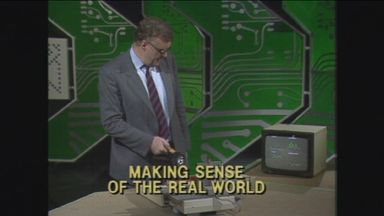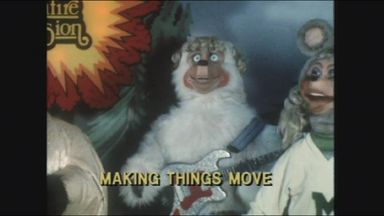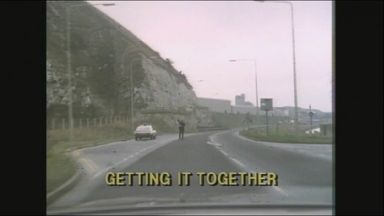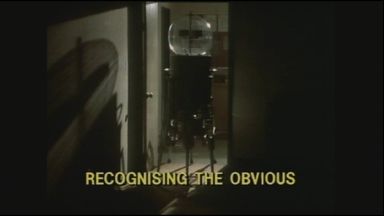Computers in Control
3. Making Things Move
Clips from this programme
Comic animatronic computer controlled figures destined for an american pizza parlour
Duration: 02:05Behind the scenes, Walt Disney animatronic figures reveal the actuators which drive them and how they are programmed.
Duration: 02:17John Coll shows how 'Binky' a ventriloquist-like dummy can move eyes, ears, neck, eyebrows and mouth, driven by pneumatic actuators and shows other actuators
Duration: 01:41A computer-controlled programmable drill in a harpsichord maker's workshop depends on stepper motors with some kind of feedback, controlled by a program written in Pascal.
Duration: 02:56The BBC Buggy draws a square using stepper motors. John Coll explains how a stepper motor works and can be programmed using Control Basic
Duration: 03:24A model Ferris wheel shows how its movement can be sensed and controlled and John Coll shows how a low power stepper motor can be programmed
Duration: 02:00Analogue potentiometers measure the position of an graphics drawing arm
Duration: 00:39The speed of powerful Servo motors controlled by voltages changed by an analogue to digital converter
Duration: 01:24Southampton University's programmable chair for studying sea sickness
Duration: 02:00An accurate three colour plotter uses stepper motors and an optical sensor
Duration: 01:46Mac explores how to program an industrial Fanuc robot and uses a pin and an egg to find out how accurately it can move.
Duration: 02:58Computers in Control
1. Introducing the Robot
First broadcast: 2nd March 1984
Duration 24:42
An introduction to the world of robotics. 1: Introducing the Robot: A visit to the Chicago Robotics Exhibition shows how the computer has revolutionised these mechanical servants and even made domestic versions possible. IAN MCNAUGHT-DAVIS begins to look at how computers can sense what's going on round them and then control mechanical devices. Production DAVID ALLEN and ROBIN MUDGE
2. Making Sense of the Real World
First broadcast: 9th March 1984
Duration 24:45
An introduction to the world of robotics. Making Sense of the Real World. How can the computer detect such widely different things as the whereabouts of a London Transport bus, fog, the length of an electronic flash or the speed of a motor? IAN MCNAUGHT -DAVIS and JOHN COLL look at a wide range of sensors which are available on the market. Production DAVID ALLEN and ROBIN MUDGE
3. Making Things Move
First broadcast: 16th March 1984
Duration 24:36
An introduction to the world of robotics. 3: Making Things Move: IAN MCNAUGHT-DAVIS continues his exploration of the principles behind the use of the computer in robotics by finding out how to make things move - even using a home micro. Production DAVID ALLEN and ROBIN MUDGE
Now playing
4. Getting it Together
First broadcast: 23rd March 1984
Duration 24:23
An introduction to the world of robotics. 4: Getting it Together: IAN MCNAUGHT-DAVIS looks at some of the thinking behind more complex computer-controlled devices. Production DAVID ALLEN and ROBIN MUDGE
5. Recognising the Obvious
First broadcast: 30th March 1984
Duration 24:36
An introduction to the world of robotics 5: Recognising the Obvious : We see, hear and interpret the real world with ease. For the computer it's not so easy, but some robotic systems can identify objects or voices and act accordingly, and it's possible to mimic these on the home microcomputer. Production DAVID ALLEN and ROBIN MUDGE

















